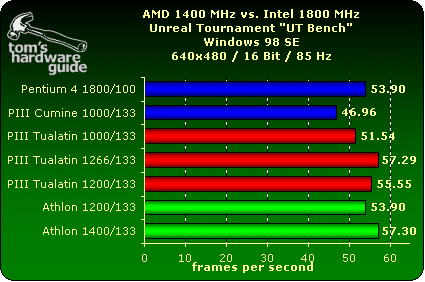Tom's Hardware heeft een review geschreven van de 1,26GHz Tualatin met 512KB L2 cache. De tekst begint met een korte introductie over de verschillen tussen Tualatin en de normale Pentium III. Zo hebben een tiental van de totaal 370 pinnetjes aan de onderkant van de chip een nieuwe functie gekregen, wat meteen ook de reden is dat de chipset van je moederbord hiermee om moet kunnen gaan. In het geval van de 815 chipset zul je dus moeten zoeken naar een B-step versie, VIA heeft het iets overzichtelijker gehouden door een T achter de naam te voegen.
De reviewers testen de 1,26GHz Pentium III-S met 512KB cache tegen een Athlon 1400MHz op de SiS 735 chipset en een 1,8GHz Pentium 4 met RDRAM. Na een aantal rondjes spelletjes, office benchmarks, video-encoding en synthetische tests komt men tot de conclusie dat het potentieel van de chip groot is. Helaas doet men geen poging om het 0,13 micron beestje over te klokken, maar duidelijk is dat het extra cache hem zeer aantrekkelijk maakt. Omdat Intel overduidelijk toch liever de nieuwere Pentium 4 populair wil maken vraagt men zich af waarom deze chip nog is uitgebracht:
In the short run, Intel still makes upgrading a farce: because of altered pins and a new bus protocol, a new "Tualatin-compatible" motherboard must still be purchased despite having the same socket 370. The current situation makes the PIII Tualatin with 512 KB attractive only for certain server applications, especially if the procurement costs are less important.
One last thing to consider: only slight changes from the Coppermine were made to the architecture. Research and development costs have long since been recovered with the Pentium III. The return on investment was therefore realized a long time ago. Only the cache memory was increased. But you can do that simply by clicking into the right software library in the design department. The miniaturization to 0.13 microns even enables a higher yield rate. Although these would be good conditions for lower prices, Intel is playing the martyr with its Pentium III-S 1.26 GHz. It's still a mystery to us why Intel even put this CPU on the market.

